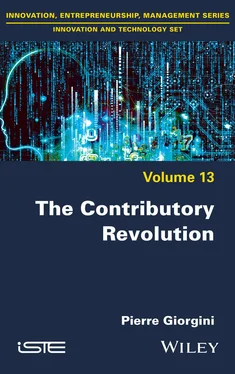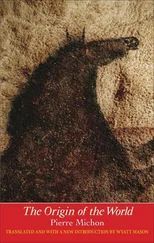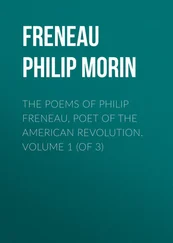This intelligence will be able to take risks because it will think it is capable of massively intervening in order to carry out repairs following an intervention that would have caused significant damage to the system. We can then say that the “Intelligence” has become the master of the system by dominating it from the outside. I would describe this conception of intelligent intervention as exo-distributive. Indeed, as an intelligent entity external to the system (exogenous), it has addressed a finite, isolable, reduced set of the structure. It has understood it, transformed it, and then distributed conceptually or physically within it the results of this transformation.
In such a conception, the human–nature relationship, for example, will be thought of as a human–machine relationship, where the human will be outside the machine, i.e. can be described entirely by isolable components and explicit operating rules. Indeed, everything that makes up the unique human characteristic (consciousness, emotions, intuition, spirituality, love, etc.) of a part of the system will be conceptually excluded or neglected by the formal categorization of its functioning. This “Intelligence” will be exercised on concepts or categories of universal scope, therefore free of peculiarities inducing a variable context. It will be by nature a-personal and will seek to permanently tend towards the objectivity and universality of the rules it creates, of classification, substantiation, laws of causality. It will therefore be reductionist and mechanistic by nature.
It could then be said with some confidence that in the exo-distributive conceptions there is inherently a form of arrogance in the power of intervention. On the other hand, in an entirely tissue-based and therefore endo-contributive (ENC) conception, the system takes the form of a 3D tissue, through which force fields (magnetic or light fields, for example) pass in general but whose mesh escapes exhaustive description. The more you magnify the view of this mesh, the more you discover smaller meshes within each mesh and so on (infinite complexity): a fabric with an infinite mesh, permanently connected in its entirety by an energy field. In quantum physics, we can imagine this constitution, for example, for the “Bose–Einstein condensate” which, very close to absolute zero, is neither gaseous, nor liquid, nor solid but an interwoven fabric of vibrations. Each mesh is in relation to all the others at the same time. There is no longer any logic of proximity.
Place is then only an appearance due to the fact that the densification of the links appears darker on observation and therefore depends on the observation device itself. The bodies of matter are no longer made up of agglomerated grains enclosed within a membrane, a shell, but of more or less dense and more or less stable meshes. The shells are no longer hermetically sealed by a “boundary” membrane but by a porous continuum between the densest and the least dense. We are faced with an infinitely complex system partly constructed by the experimental device that allows its observation (meshes of infinite meshes).
I wrote at the beginning of this chapter:
We are faced with two conceptions and therefore two “ways of observing”, without one or the other being able to claim to be more in line with the reality of real than the other. The way of observing somehow creates the intelligibility of the object and thus creates the object, in particular when it is too small or too big to be tackled by the sensory experience of a human being.
This leads to a form of humility in the face of the complexity of reality. Science provides a representation that is never definitively complete. In this case, the intervention intelligence will always have to take into account the incompleteness of its models and the risk linked to its approximations when it wishes to intervene radically and extensively in reality.
In such a system, there is no external “intelligence”, unlike the exo-distributive design. This “Intelligence” is distributed, a diffuse part of the web of links itself. To take the example of driverless cars, we are in the case where the network has no central intelligence, and where each vehicle carries its own intelligence and is responsible for adjusting to its environment to which it is permanently connected.
The intelligence is distributed and is a “diffused web of links” within the system. In this case, it is impossible to extract or address a part of the fabric to model or mathematicize it. The understanding of the phenomena is then endogenous and intimately linked to the interrelations that the “Intelligence” itself maintains within the fabric. The “Intelligence” is then an integrated stakeholder in the understanding of the system. “Intelligence” will no longer be able to reduce and massively transform the dynamics of the whole but will be able to interact on the dynamic reality of the fabric of links at a given moment as a stakeholder. Its only capacity of intervention is a capacity of influence, of alliance with the fabric, in order to influence its systemic dynamics from within. To take the example of the network of driverless vehicles, no intelligence will be able to instantly stop all the vehicles at the same time.
It will intervene on an infinite system of interactions that includes itself and includes the infinite interactions that it has with the fabric. It will then perceive the system as unmanageable or uncontrollable in its entirety for two reasons. The first stems from the infinite complexity due to the fact that each mesh is made up of smaller meshes, down to the infinitely small. The second comes from the fact that “Intelligence” is itself included in the locality, being part of the whole, of the modeling and transformation actions and therefore cannot conceive it in its entirety. There is recursivity in the interaction between intelligence and system. This is not only a problem of synchronic complexity, it is also due to the capacity to change direction at a local level.
Unlike the first conception, this “Intelligence” can no longer think it can massively control the system from the outside. Indeed, total control would amount to controlling itself, but above all, the infinite complexity of the system hinders accurate and predictive modeling. This imposes greater caution on it because in the event of an error or a runaway, it cannot imagine massively correcting the damage caused, including to itself. We will then be faced with an endo-contributive conception, i.e. endogenous and contributory. “Intelligence” will have to be content to contribute from the inside to the dynamics of the whole. It will have to accept that any reduction of the system into simple elements that it operates is incomplete and that any formal model that allows this reduction cannot demonstrate its own universal relevance because it is always based on a certain number of predicates that cannot be formally demonstrated by the theory that they generate (Gödel’s second theorem (1931) 2).
1.3. Our relationship to language is in question
These two conceptions (ENC and EXD) can also be characterized by the analysis in each case of the “Intelligent” activity of substantiation in the sense of acquiring the capacity to name, to create a signifying noun, which in the extension of the notion of place amounts to designating a formal locality. This is the fundamental capacity of human intelligence in relation to language which consists of designating – as a set of coherent properties modeled and identified by Intelligence – an object, a set of objects or a phenomenon of the system by a common noun, verb or adjective that denotes it. In the case of the exo-distributive model, this activity will first seek to be thought of as accurate, because it is descriptive of what is unequivocally observed and interpreted from the outside. The causal relationship (cause/effect and effect/cause) will be considered objective and not subject to interpretation. Deterministic evolutionary equations will be considered accurate within a specific range of validity. In the endo-contributive case, on the other hand, the activity of substantiation cannot be isolated from the system itself. The modeling of the system creates the system. There is an intrinsic recursivity to the so-called “Intelligent” activity. The subject creates the phenomenon or the object as interpretation and therefore substantiation, which in turn creates the subject as part of the system which is characterized by the phenomena.
Читать дальше












